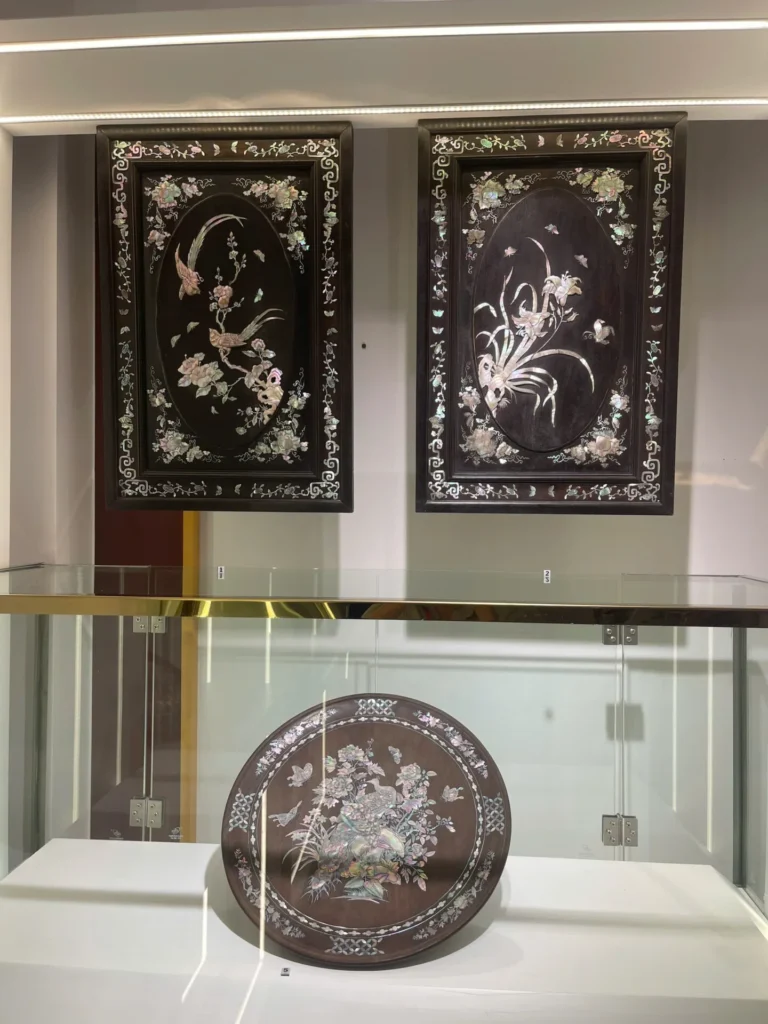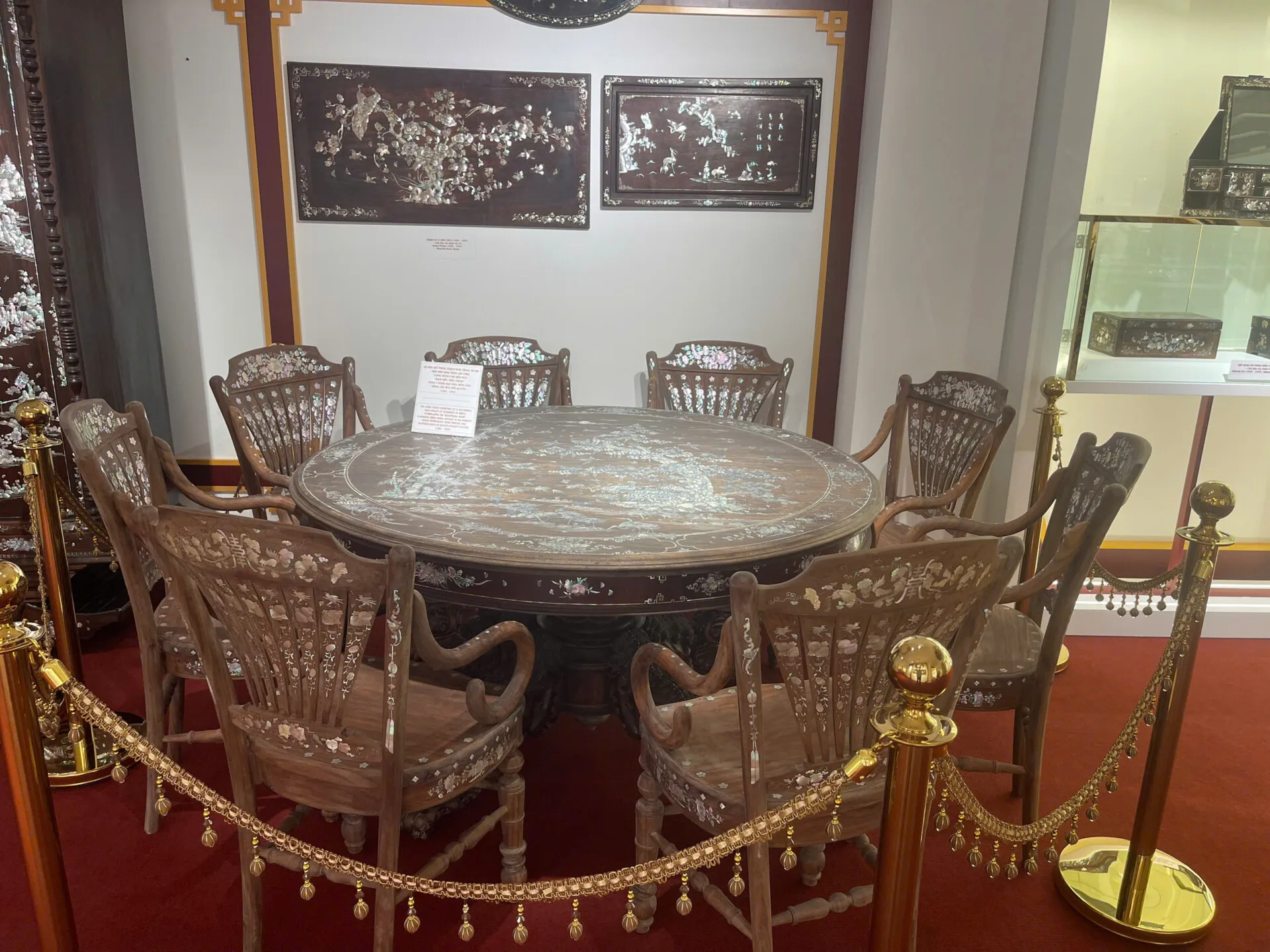Mother-of-pearl inlay or mother-of-pearl inlay is a long-standing craft in Vietnam. Since ancient times, this craft has been quite developed thanks to the abundant source of raw materials from the geographical location of Vietnam – a country stretching along the coast. Chuon Ngo craft village, south of Hanoi, is considered the cradle of Vietnamese mother-of-pearl inlay. Previously, most mother-of-pearl inlay products were reserved for the royal court, mandarins and the wealthy.
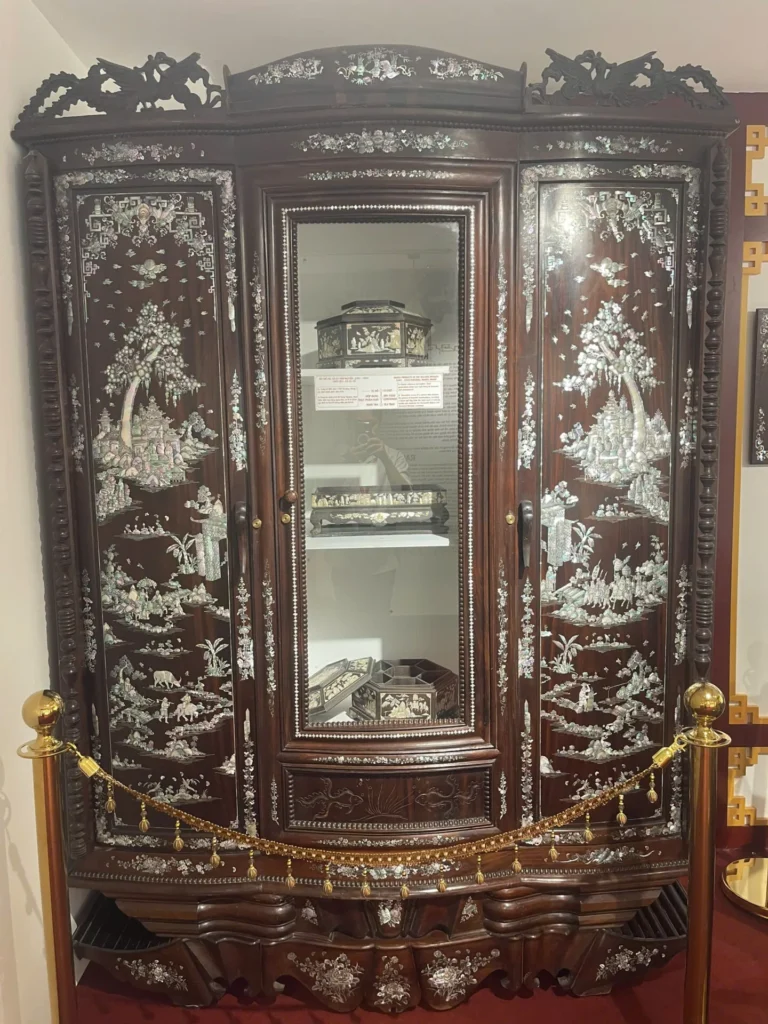
Inlay in Vietnam has been mentioned in history books since the 3rd-5th century, during the period of Chinese domination. The founder of the inlay craft in Hanoi was Truong Cong Thanh, who lived during the Ly Dynasty (1009-1225). He once joined Ly Thuong Kiet’s army and after leaving the army, he studied and researched the inlay craft.
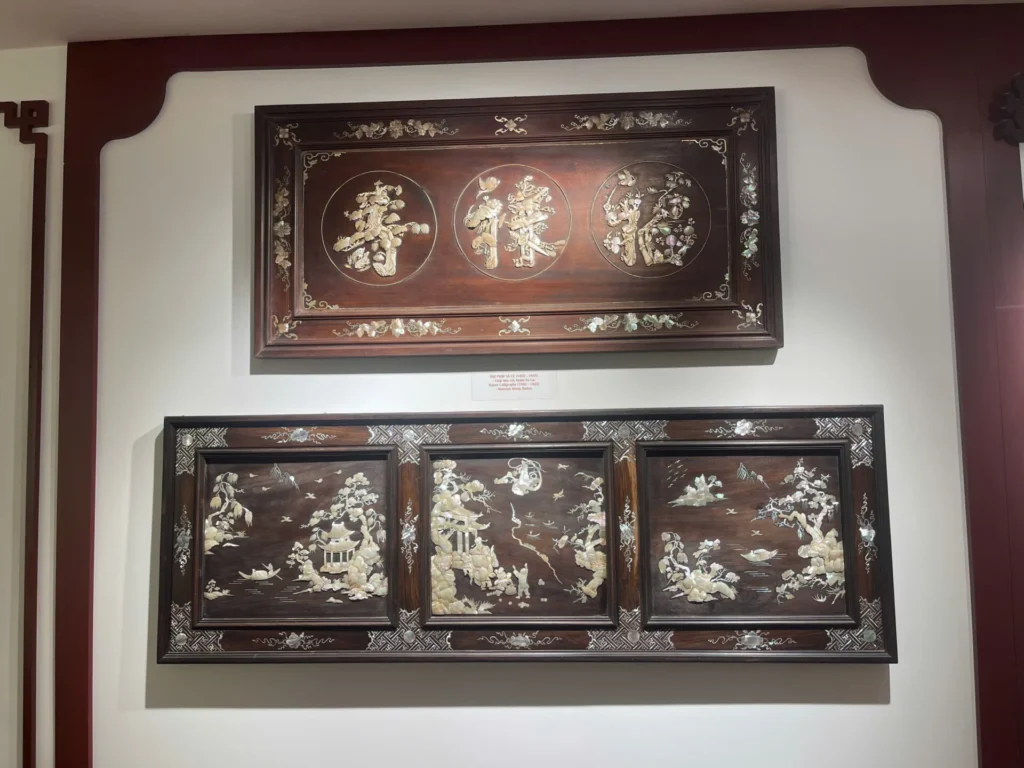
During the Tran Dynasty (1226-1400), the mother-of-pearl inlay craft became very skillful and developed strongly. During the Nguyen Dynasty, the art of mother-of-pearl inlay was highly appreciated and favored by the royal family and mandarins. This was also the period when this craft developed the fastest in Vietnam. Today, mother-of-pearl inlay products have been exported to many countries.
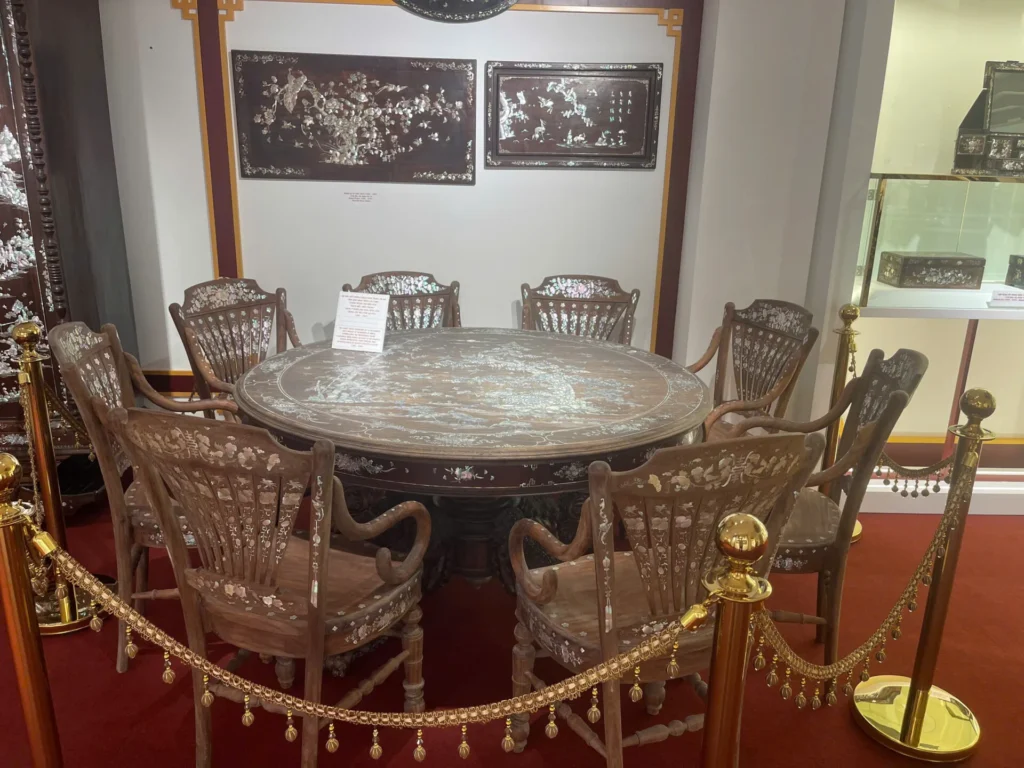
The process of making mother-of-pearl inlaid products involves many meticulous and elaborate steps: first, the pattern must be drawn, then the shells are split into pieces and then cut along the grain. The cut shells are soaked in water and heated with a hot lamp to flatten the curved shells. Carve wood into the desired shape on the surface of the object, then use lacquer to attach the shell pieces and then polish the surface after attaching. Finally, a layer of lime powder is applied to the smooth surface, then polished with mugwort leaves and rice flour is rubbed onto the finished product.
Regarding the decorative theme, mother-of-pearl inlaid products often depict famous landscapes and historical events of Vietnam.
